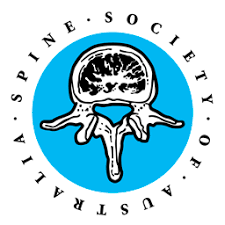About Leg Pain
What is Leg Pain?
Leg pain can be a discomfort in any part of the leg, including the knee, thigh, or calf. The pain might be a dull ache, a sharp, stabbing pain, or it might feel like a throbbing, cramping, or burning sensation. It can be temporary or chronic, mild or severe, and may be caused by many factors such as injury, overuse, or certain health conditions.
How Does Leg Pain Impact Your Anatomy and Health?
Leg pain can impact your anatomy and health in various ways:
- Mobility Issues: Chronic or severe leg pain can affect your ability to move around and perform daily activities, leading to decreased physical fitness and potentially contributing to weight gain and associated health risks.
- Muscle Loss: If leg pain results in reduced activity, you might experience muscle atrophy (loss of muscle mass), further exacerbating mobility issues.
- Circulation Problems: Certain conditions that cause leg pain, such as peripheral artery disease or deep vein thrombosis, are due to circulation issues. This can further affect your health, potentially leading to serious events like heart attack or stroke.
- Psychological Impact: Chronic pain, including leg pain, can lead to psychological effects such as depression, anxiety, and decreased quality of life.
Who is Most at Risk for Leg Pain?
Several groups of people are at a higher risk for leg pain:
- Older Adults: The risk of leg pain increases with age due to the general wear and tear on the joints, decreased muscle mass, and increased likelihood of conditions such as arthritis and peripheral artery disease.
- Athletes: People who engage in high-impact sports or intensive physical activities are at an increased risk of injuries that can cause leg pain, such as sprains, fractures, or shin splints.
- People with Certain Health Conditions: Conditions like diabetes, arthritis, nerve issues (neuropathy), or circulatory problems can all lead to leg pain.
- Overweight or Obese Individuals: Carrying excess weight can put extra pressure on the joints and muscles in the legs, leading to discomfort or pain.
- People with Certain Lifestyle Factors: Those who spend long periods standing or sitting or wear inappropriate footwear can also experience increased leg pain.
Causes of Leg Pain
- Muscle Strain or Sprain: Overstretching or tearing the muscles or ligaments in the leg can cause pain.
- Injury or Trauma: Fractures, dislocations, contusions, or other traumatic injuries can lead to leg pain.
- Peripheral Artery Disease (PAD): PAD occurs when there is reduced blood flow to the legs due to narrowed or blocked arteries, resulting in leg pain during walking or exercise (claudication).
- Deep Vein Thrombosis (DVT): DVT is a blood clot that forms in a deep vein, often in the lower leg, causing pain, swelling, and potentially a serious condition if the clot travels to the lungs (pulmonary embolism).
- Sciatica: Compression or irritation of the sciatic nerve in the lower back can cause leg pain that radiates down the buttock, thigh, and calf.
- Radiculopathy: Compression or irritation of spinal nerve roots. Radiculopathy can occur in any region of the spine, including the lumbar (lower back), cervical (neck), or thoracic (mid-back) areas. When radiculopathy affects the nerve roots in the lower back, it can lead to leg pain.
- Herniated Disc: When a spinal disc in the lower back bulges or ruptures, it can press on nerves, including those that extend to the legs, causing leg pain. This is commonly referred to as sciatica.
- Spinal Stenosis: Narrowing of the spinal canal in the lower back can put pressure on the spinal cord and nerves, leading to leg pain, weakness, and numbness.
Symptoms of Leg Pain
The symptoms of leg pain can vary depending on the underlying cause. Common symptoms include:
- Dull, aching, sharp, or throbbing pain in the leg.
- Swelling or inflammation.
- Redness or warmth in the affected area.
- Weakness or decreased range of motion.
- Numbness or tingling sensation.
- Muscle cramps or spasms.
- Difficulty walking or bearing weight on the leg.
- Limited mobility or stiffness.
- Skin changes, such as discolouration or ulcers (in severe cases).
Categories of Leg Pain
Leg pain can be categorised into acute and chronic pain:
- Acute Leg Pain: Acute leg pain is sudden in onset and typically lasts for a short duration. Injuries, strains, sprains, or temporary conditions often cause it. With appropriate treatment and healing time, acute leg pain tends to resolve.
- Chronic Leg Pain: Chronic leg pain persists over a prolonged period, usually three months or more. It can be caused by conditions such as peripheral neuropathy, arthritis, or ongoing injuries. Managing chronic leg pain involves identifying and addressing the underlying cause while focusing on pain management strategies.
Diagnosis of Leg Pain
To diagnose the cause of leg pain, doctors may employ various approaches, including:
- Medical History: Gathering information about the nature of the pain, its location, duration, and associated symptoms helps understand potential causes.
- Physical Examination: A physical examination may involve assessing the affected leg and checking for swelling, tenderness, range of motion, and signs of injury or inflammation.
- Imaging Tests: X-rays, CT scans, MRIs, or ultrasound scans can provide detailed images of the leg's internal structures, helping identify fractures, bone abnormalities, disc herniation, or other issues.
- Blood Tests: Analysing blood samples can help identify certain conditions, such as infections, inflammatory markers, or indicators of vascular problems.
- Nerve Studies: Electromyography (EMG) and nerve conduction studies (NCS) evaluate nerve function, helping identify nerve-related causes of leg pain.
- Doppler Ultrasound: This non-invasive test uses sound waves to assess blood flow in the veins and arteries, aiding in diagnosing conditions like deep vein thrombosis or peripheral artery disease.
The specific diagnostic approach depends on the suspected cause of the leg pain and may involve consultation with specialists such as orthopaedic doctors, neurologists, or vascular surgeons.
Treatment of Leg Pain
The treatment of leg pain depends on the underlying cause. Here are some common approaches:
- Rest and Activity Modification: Rest and avoiding activities that exacerbate the pain are often recommended for acute injuries or overuse conditions. Gradual return to activity or modification of activities may be advised.
- Medications: Pain relievers such as over-the-counter nonsteroidal anti-inflammatory drugs (NSAIDs) can help alleviate pain and reduce inflammation. In some cases, prescription medications, such as muscle relaxants or nerve pain medications, may be prescribed.
- Physical Therapy: Exercises and physical therapy can help improve strength, flexibility, and range of motion in the leg. Physical therapists may also use pain management techniques like manual therapy, ultrasound, or electrical stimulation.
- Injection Therapy: In certain cases, injections of corticosteroids, local anaesthetics, or other medications may be administered to provide relief from pain and inflammation. Examples include epidural steroid injections or joint injections.
- Assistive Devices: Assistive devices like crutches, braces, or orthotics may be recommended to support and relieve pressure from the affected leg.
- Surgical Intervention: In cases where conservative treatments fail or if there is a structural issue causing the leg pain (e.g., herniated disc or severe arthritis), surgery may be considered a last resort. Surgical procedures aim to alleviate nerve pressure, repair injuries, or correct underlying anatomical abnormalities.
- Other Modalities: Additional treatment options, depending on the specific cause and individual needs, may include acupuncture, chiropractic care, transcutaneous electrical nerve stimulation (TENS), or alternative therapies like massage or heat/cold therapy.



